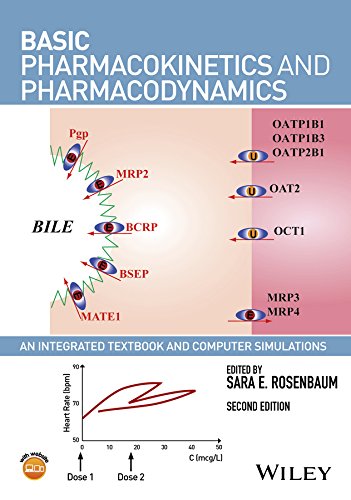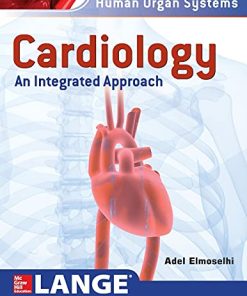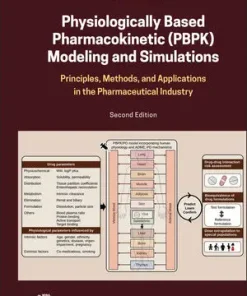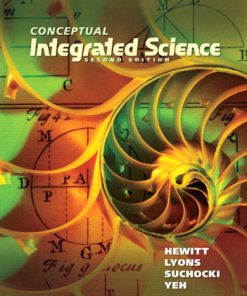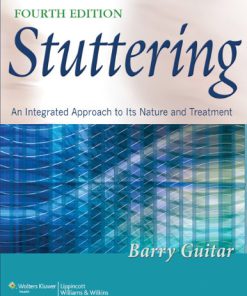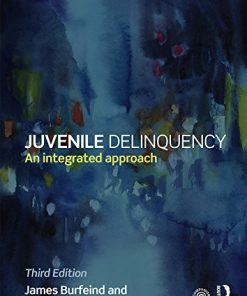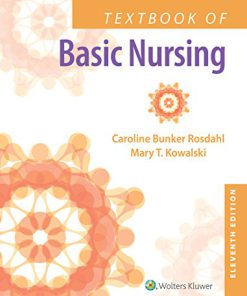Basic Pharmacokinetics and Pharmacodynamics: An Integrated Textbook and Computer Simulations 2nd Edition, (Ebook PDF)
$50.00 Original price was: $50.00.$25.00Current price is: $25.00.
Basic Pharmacokinetics and Pharmacodynamics: An Integrated Textbook and Computer Simulations 2nd Edition, (Ebook PDF) – Digital Instant Dowload.
Basic Pharmacokinetics and Pharmacodynamics: An Integrated Textbook and Computer Simulations 2nd Edition, (Ebook PDF) – Digital Instant Dowload.
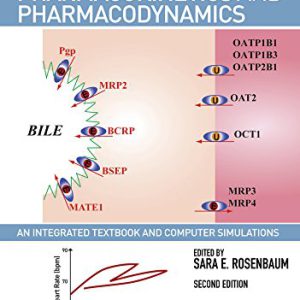
Product details:
- ISBN-10 : 9781119143154
- ISBN-13 : 978-1119143154
- Author: Sara E. Rosenbaum
Updated with new chapters and topics, this book provides a comprehensive description of all essential topics in contemporary pharmacokinetics and pharmacodynamics. It also features interactive computer simulations for students to experiment and observe PK/PD models in action.
• Presents the essentials of pharmacokinetics and pharmacodynamics in a clear and progressive manner
• Helps students better appreciate important concepts and gain a greater understanding of the mechanism of action of drugs by reinforcing practical applications in both the book and the computer modules
Table contents:
1 Introduction to Pharmacokinetics and Pharmacodynamics 1
Sara E. Rosenbaum
1.1 Introduction: Drugs and Doses 2
1.2 Introduction to Pharmacodynamics 3
1.2.1 Drug Effects at the Site of Action 3
1.2.2 Agonists, Antagonists, and Concentration–Response Relationships 6
1.3 Introduction to Pharmacokinetics 9
1.3.1 Plasma Concentration of Drugs 9
1.3.2 Processes in Pharmacokinetics 11
1.4 Dose–Response Relationships 12
1.5 Therapeutic Range 14
1.5.1 Determination of the Therapeutic Range 15
1.6 Summary 18
Reference 18
2 Passage of Drugs Through Membranes 19
Sara E. Rosenbaum
2.1 Introduction 20
2.2 Structure and Properties of Membranes 20
2.3 Passive Diffusion 21
2.3.1 Transcellular Passive Diffusion 23
2.3.2 Paracellular Passive Diffusion 25
2.4 Carrier-Mediated Processes: Transport Proteins 26
2.4.1 Uptake Transporters: SLC Superfamily 27
2.4.2 Efflux Transporters: ABC Superfamily 29
2.4.3 Characteristics of Transporter Systems 31
2.4.4 Simulation Exercise 32
2.4.5 Clinical Examples of Transporter Involvement in Drug Response 32
References 33
3 Drug Administration and Drug Absorption 35
Steven C. Sutton
3.1 Introduction: Local and Systemic Drug Administration 36
3.2 Routes of Drug Administration 37
3.2.1 Common Routes of Local Drug Administration 37
3.2.2 Common Routes of Systemic Drug Administration 38
3.3 Overview of Oral Absorption 41
3.3.1 Anatomy and Physiology of the Oral-Gastric-Intestinal Tract and Transit Time 41
3.4 Extent of Drug Absorption 44
3.4.1 Bioavailability Factor 44
3.4.2 Individual Bioavailability Factors 45
3.5 Determinants of the Fraction of the Dose Absorbed (F) 46
3.5.1 Disintegration 46
3.5.2 Dissolution 46
3.5.3 Formulation Excipients 50
3.5.4 Adverse Events within the Gastrointestinal Lumen 50
3.5.5 Transcellular Passive Diffusion 53
3.5.6 Particulate Uptake 53
3.5.7 Paracellular Passive Diffusion 53
3.5.8 Uptake and Efflux Transporters 54
3.5.9 Presystemic Intestinal Metabolism or Extraction 58
3.5.10 Presystemic Hepatic Metabolism or Extraction 60
3.6 Factors Controlling the Rate of Drug Absorption 61
3.6.1 Dissolution-Controlled Absorption 63
3.6.2 Membrane Penetration-Controlled Absorption 63
3.6.3 Overall Rate of Drug Absorption 63
3.7 Biopharmaceutics Classification System 64
3.7.1 Intestinal Reserve Length 64
3.7.2 Biopharmaceutics Classification System (BCS) 64
3.7.3 Biopharmaceutics Drug Disposition Classification System (BDDCS) 65
3.8 Food Effects 65
Problems 66
References 67
4 Drug Distribution 71
Sara E. Rosenbaum
4.1 Introduction 72
4.2 Extent of Drug Distribution 72
4.2.1 Distribution Volumes 74
4.2.2 Tissue Binding Plasma Protein Binding and Partitioning: Concentrating Effects 75
4.2.3 Assessment of the Extent of Drug Distribution: Apparent Volume of Distribution 76
4.2.4 Plasma Protein Binding 82
4.3 Rate of Drug Distribution 89
4.3.1 Perfusion-Controlled Drug Distribution 90
4.3.2 Diffusion or Permeability-Controlled Drug Distribution 93
4.4 Distribution of Drugs to the Central Nervous System 93
Problems 96
References 98
5 Drug Elimination and Clearance 99
Sara E. Rosenbaum
5.1 Introduction 100
5.1.1 First-Order Elimination 101
5.1.2 Determinants of the Elimination Rate Constant and the Half-Life 102
5.2 Clearance 102
5.2.1 Definition and Determinants of Clearance 102
5.2.2 Total Clearance, Renal Clearance, and Hepatic Clearance 104
5.2.3 Relationships among Clearance, Volume of Distribution, Elimination Rate Constant, and Half-Life 105
5.2.4 Primary and Secondary Parameters 106
5.2.5 Measurement of Total Body Clearance 106
5.3 Renal Clearance 108
5.3.1 Glomerular Filtration 109
5.3.2 Tubular Secretion 110
5.3.3 Tubular Reabsorption 113
5.3.4 Putting Meaning into the Value of Renal Clearance 114
5.3.5 Measurement of Renal Clearance 115
5.3.6 Fraction of the Dose Excreted Unchanged 118
5.4 Hepatic Elimination and Clearance 119
5.4.1 Phase I and Phase II Metabolism 120
5.4.2 The Cytochrome P450 Enzyme System 121
5.4.3 Glucuronidation 122
5.4.4 Metabolism-Based Drug–Drug Interactions 122
5.4.5 Hepatic Drug Transporters and Drug–Drug Interactions 125
5.4.6 Kinetics of Drug Metabolism 127
5.4.7 Hepatic Clearance and Related Parameters 128
Problems 139
References 142
6 Compartmental Models in Pharmacokinetics 145
Sara E. Rosenbaum
6.1 Introduction 146
6.2 Expressions for Component Parts of the Dose–Plasma Concentration Relationship 146
6.2.1 Effective Dose 146
6.2.2 Rate of Drug Absorption 147
6.2.3 Rate of Drug Elimination 148
6.2.4 Rate of Drug Distribution 148
6.3 Putting Everything Together: Compartments and Models 149
6.3.1 One-Compartment Model 149
6.3.2 Two-Compartment Model 150
6.3.3 Three-Compartment Model 150
6.4 Examples of Complete Compartment Models 152
6.4.1 Intravenous Bolus Injection in a One-Compartment Model with First-Order Elimination 152
6.4.2 Intravenous Bolus Injection in a Two-Compartment Model with First-Order Elimination 153
6.4.3 First-Order Absorption in a Two-Compartment Model with First-Order Elimination 154
6.5 Use of Compartmental Models to Study Metabolite Pharmacokinetics 155
6.6 Selecting and Applying Models 156
Problems 157
Suggested Readings 157
7 Pharmacokinetics of an Intravenous Bolus Injection in a One-Compartment Model 159
Sara E. Rosenbaum
7.1 Introduction 160
7.2 One-Compartment Model 160
7.3 Pharmacokinetic Equations 162
7.3.1 Basic Equation 162
7.3.2 Half-Life 163
7.3.3 Time to Eliminate a Dose 163
7.4 Simulation Exercise 163
7.5 Application of the Model 165
7.5.1 Predicting Plasma Concentrations 165
7.5.2 Duration of Action 166
7.5.3 Value of a Dose to Give a Desired Initial Plasma Concentration 167
7.5.4 Intravenous Loading Dose 167
7.6 Determination of Pharmacokinetic Parameters Experimentally 168
7.6.1 Study Design for the Determination of Parameters 168
7.6.2 Pharmacokinetic Analysis 169
7.7 Pharmacokinetic Analysis in Clinical Practice 173
Problems 174
Suggested Reading 176
8 Pharmacokinetics of an Intravenous Bolus Injection in a Two-Compartment Model 177
Sara E. Rosenbaum
8.1 Introduction 178
8.2 Tissue and Compartmental Distribution of a Drug 179
8.2.1 Drug Distribution to the Tissues 179
8.2.2 Compartmental Distribution of a Drug 180
8.3 Basic Equation 181
8.3.1 Distribution: A, α, and the Distribution t1/2 182
8.3.2 Elimination: B, β, and the β t1/2 182
8.4 Relationship Between Macro and Micro Rate Constants 183
8.5 Primary Pharmacokinetic Parameters 183
8.5.1 Clearance 184
8.5.2 Distribution Clearance 184
8.5.3 Volume of Distribution 186
8.6 Simulation Exercise 188
8.7 Determination of the Pharmacokinetic Parameters of the Two-Compartment Model 191
8.7.1 Determination of Intercepts and Macro Rate Constants 191
8.7.2 Determination of the Micro Rate Constants: k12 k21 and k10 193
8.7.3 Determination of the Primary Pharmacokinetic Parameters 193
8.8 Clinical Application of the Two-Compartment Model 194
8.8.1 Measurement of the Elimination Half-Life in the Postdistribution Phase 194
8.8.2 Determination of the Loading Dose 195
8.8.3 Evaluation of a Dose: Monitoring Plasma Concentrations and Patient Response 197
Problems 197
Suggested Readings 199
You may also like…
Medicine - Cardiology
Medicine - Pharmacology
Physiologically Based Pharmacokinetic (PBPK) Modeling and Simulations 2nd Edition
Uncategorized
Uncategorized
Stuttering: An Integrated Approach to its Nature and Treatment 4th Edition, (Ebook PDF)


